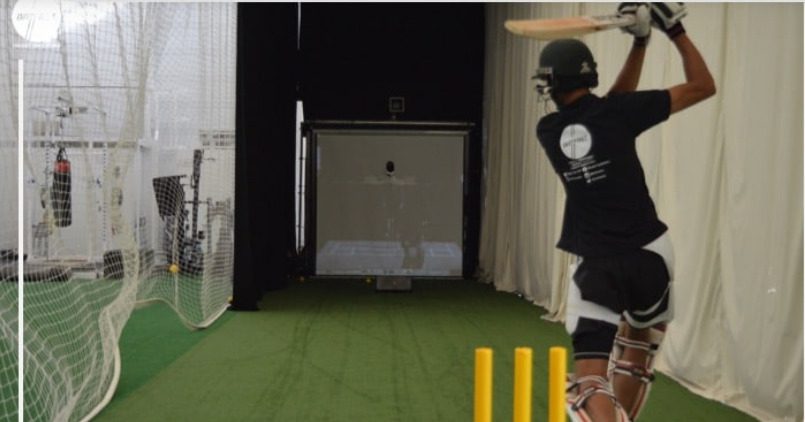Extending from the third umpire to multiple cameras and mics, various technologies affected the game of cricket. Life in the twenty-first century is primarily determined by the technology surrounding us.
Technological advancements have altered people’s lifestyles, for better or worse. On the other hand, technology has had a largely positive impact on the world of sports.
Gone are the days of black-and-white telecasting and helmets without grills; today, technological advancements have improved the cricketing experience for both players and spectators.
According to cricfann, Cricket has incorporated some of the most recent technological advances available in the world. The use of foldable and wireless devices has made it possible to entice viewers and players to participate in the game.
A few techniques that have changed the game of cricket are described here.
-
Third umpire
The third umpire was brought in to help out the two referees on the ground. To advise the central referees, the third umpire sits off the ground with access to TV replays of certain situations (such as disputed catches, boundaries, and runs out).
The umpires on the field can connect thanks to wireless technology.
-
HAWKEYE
Hawk-eye is a system that traces a ball’s trajectory and sends it to a virtual-reality machine with a claimed accuracy of 5 mm. Hawk-Eye employs a network of six or more computer-linked television cameras strategically placed around the cricket field.
The computer reads the video in real-time and tracks the cricket ball’s path through each camera. These six different views are then combined to create an accurate three-dimensional representation of the ball’s path.
-
Hotspot
Umpires can now trace the impact of a ball on the batman’s bat and the pad using an infrared imaging system. Hotspot technology is widely used to determine whether the ball has bitten the batsman’s bat or pad.
This helps umpires make leg-before-wicket and caught-behind decisions by allowing them to see where the ball hit the ground.
Two infrared cameras constantly record the game on opposite ground sides. These cameras measure the heat generated by friction and accurately predict the ball’s point of contact.
The Decision Review System frequently uses the Hotspot to review decisions (DRS).
The Snick-o-meter and Ultra Edge are the Hotspot’s main technological rivals. Due to the high cost of setting up a hotspot is only used in limited situations in international cricket.
-
Snick-o-meter
The Snick- o-meter detects whether there has been a snick by analyzing audio and video during a cricket match graphically. When the leather ball makes contact with the bat, it makes a nice snack.
This is reflected in the recorded audio’s sound waves. It is frequently unclear whether the ball has contacted the bat or the batsman’s equipment.
The difference between the soundwaves of the two is that the sound of contact between the bat and the ball is sharper and shorter.
Sound waves become fatter when the ball makes contact with the batsman’s other equipment.
For the past two decades, the Snick- o- meter has been a critical tool in assisting umpires with the accuracy of their decisions.
-
Multiple cameras and mics
Cricket’s evolution from limited television and radio broadcasts to today’s HD screens is mainly due to technological advancements and new broadcasting equipment.
The Spider Cam, Stump Camera, Umpire Cam, and Slow-Motion Camera are just a few examples of technological advances that have improved the game’s visual aspect while also assisting third umpires in making more accurate decisions.
Furthermore, stump microphones and player microphones enhance the experience of watching a game from the comfort of one’s own home.
These advancements in technology have grown closer to the cricket pitch, allowing us to fully immerse ourselves in the game.
-
RPM of Ball Spin
One of the stumps has a sensitive microphone that can pick up the sound when the ball nicks the bat. This technology is only used to provide more information to television viewers and to show whether the ball hit the bat or not.
Unfortunately, at this time, umpires do not have the benefit of hearing Snick-o-meter,’ whereas a Real-time Snick-o-meter has been established to supplement Hot Spot technology.
-
Speed gun
The speed gun, also known as a radar gun, was first introduced in 1999 to determine the bowlers’ speed. This gun works on the same principle as a car speed radar, which traffic cops commonly use on the road to determine the speed of moving vehicles.
It confirms the bowler’s bowling delivery speed and supports the Doppler shift principle. The speed gun was introduced with the primary goal of determining the speed of fast bowlers and assisting them with the speed of their deliveries.
conclusion
Cricket’s evolution has seen many changes, and we believe that technological advancements in the game will continue to inspire and support everyone who can connect with it. You can check good-name.org for more technology news and advancement updates.
ICC, on the other hand, does not accept all technologies. Nonetheless, governing bodies are constantly working to improve the game’s various aspects and have occasionally incorporated cutting-edge technology into the sport.





























